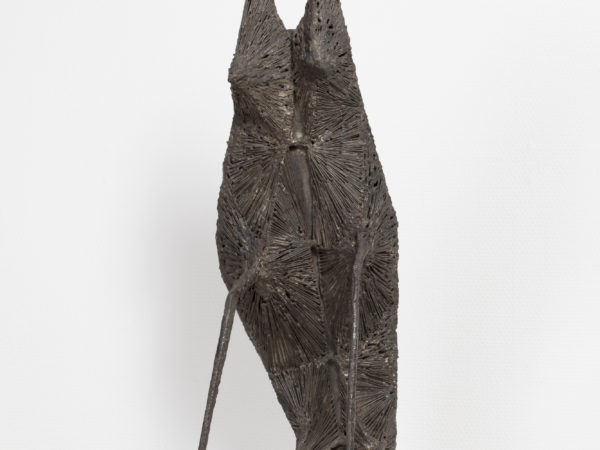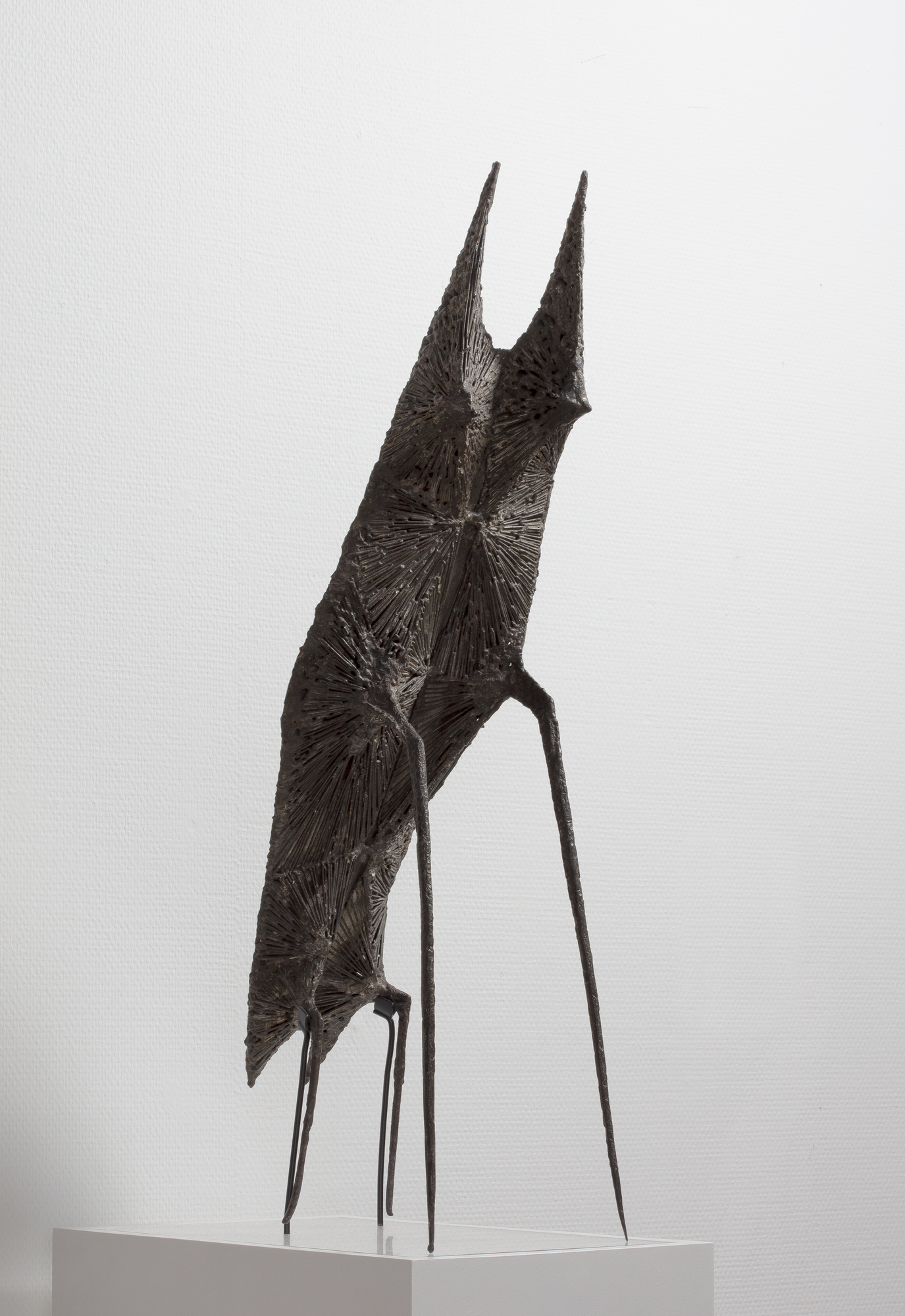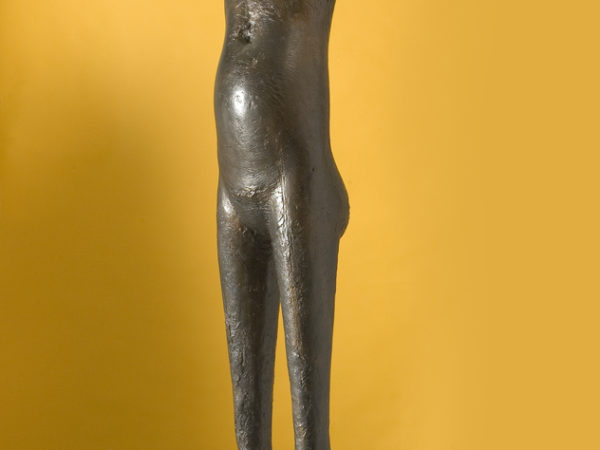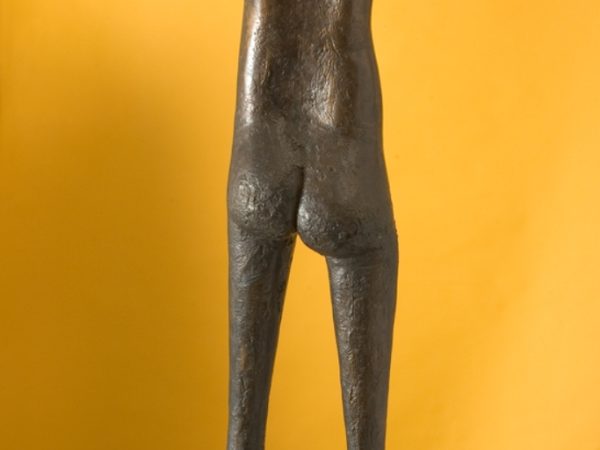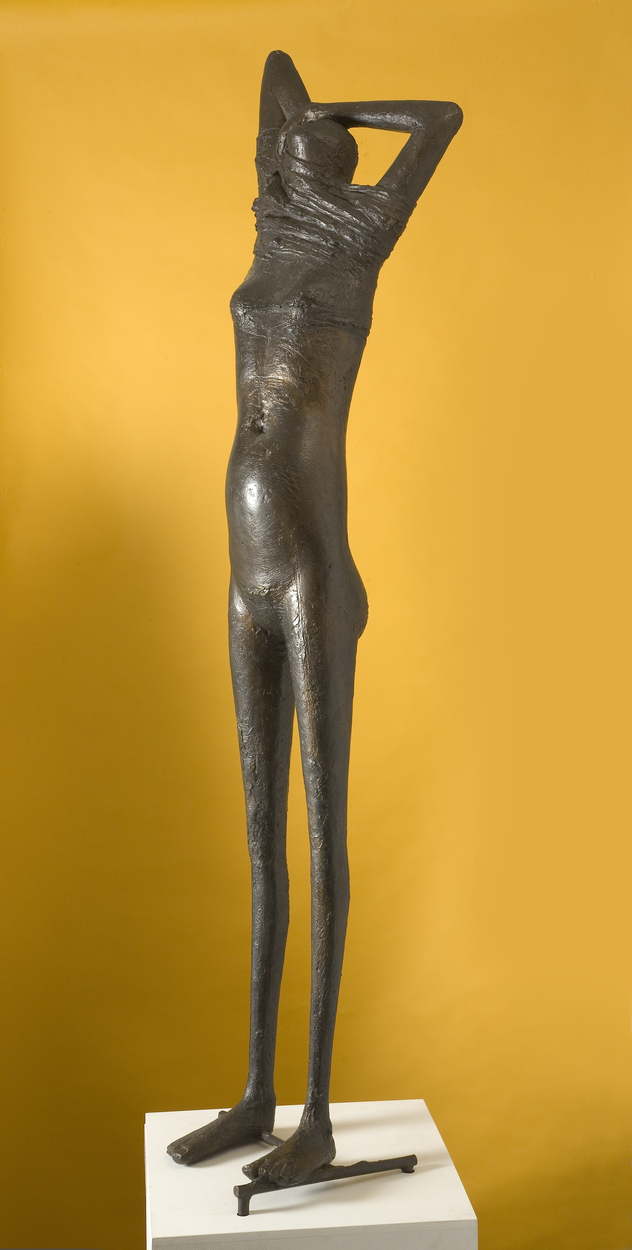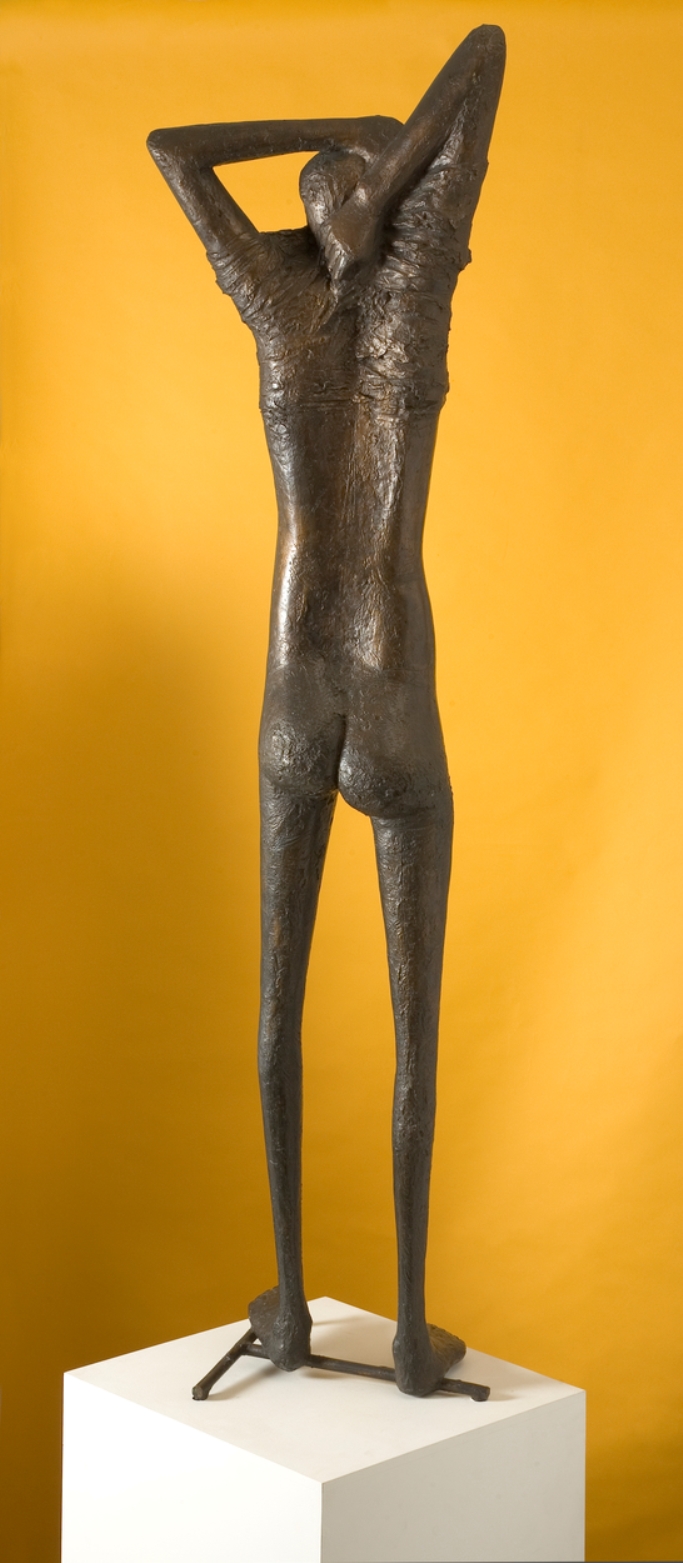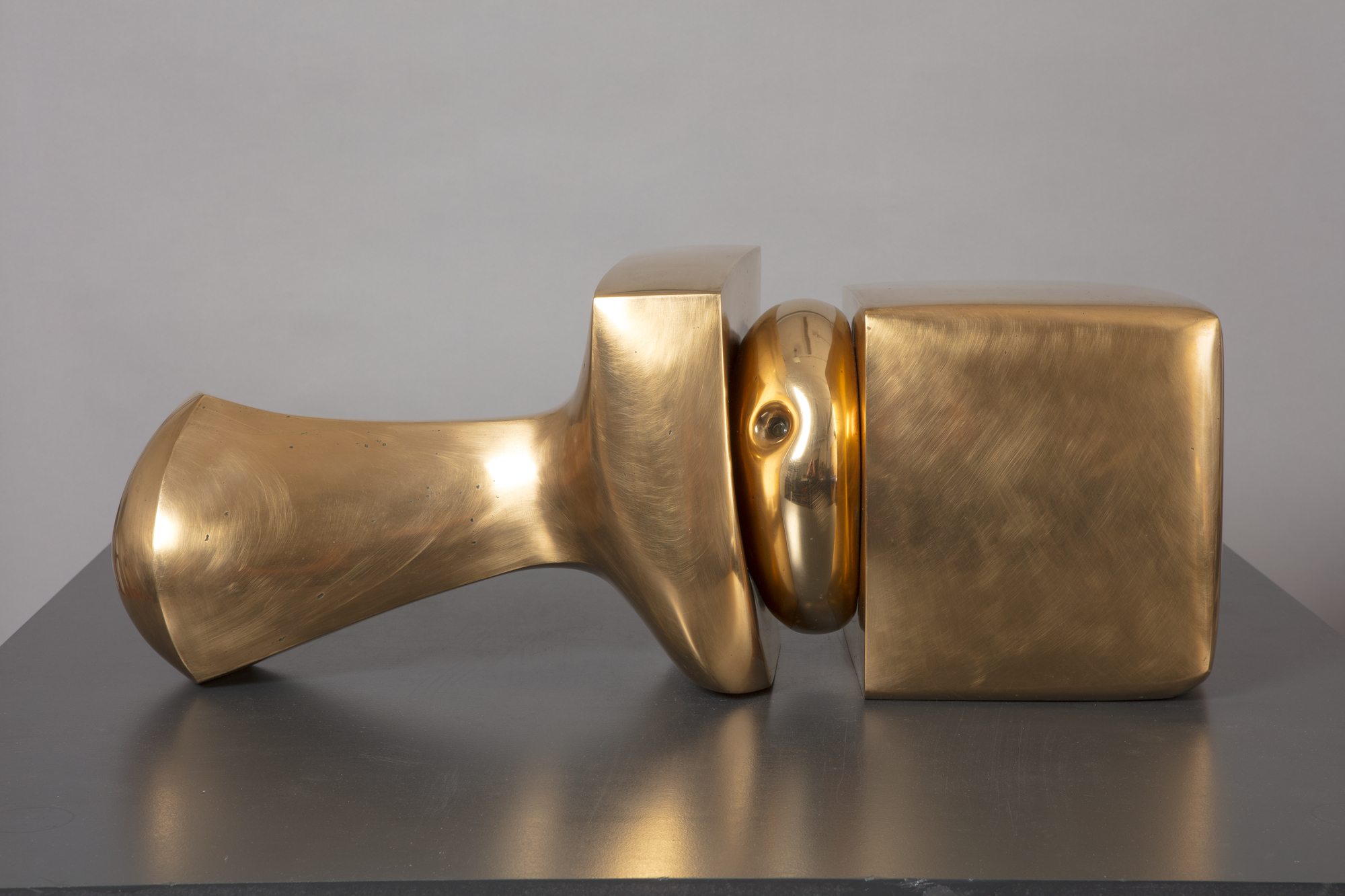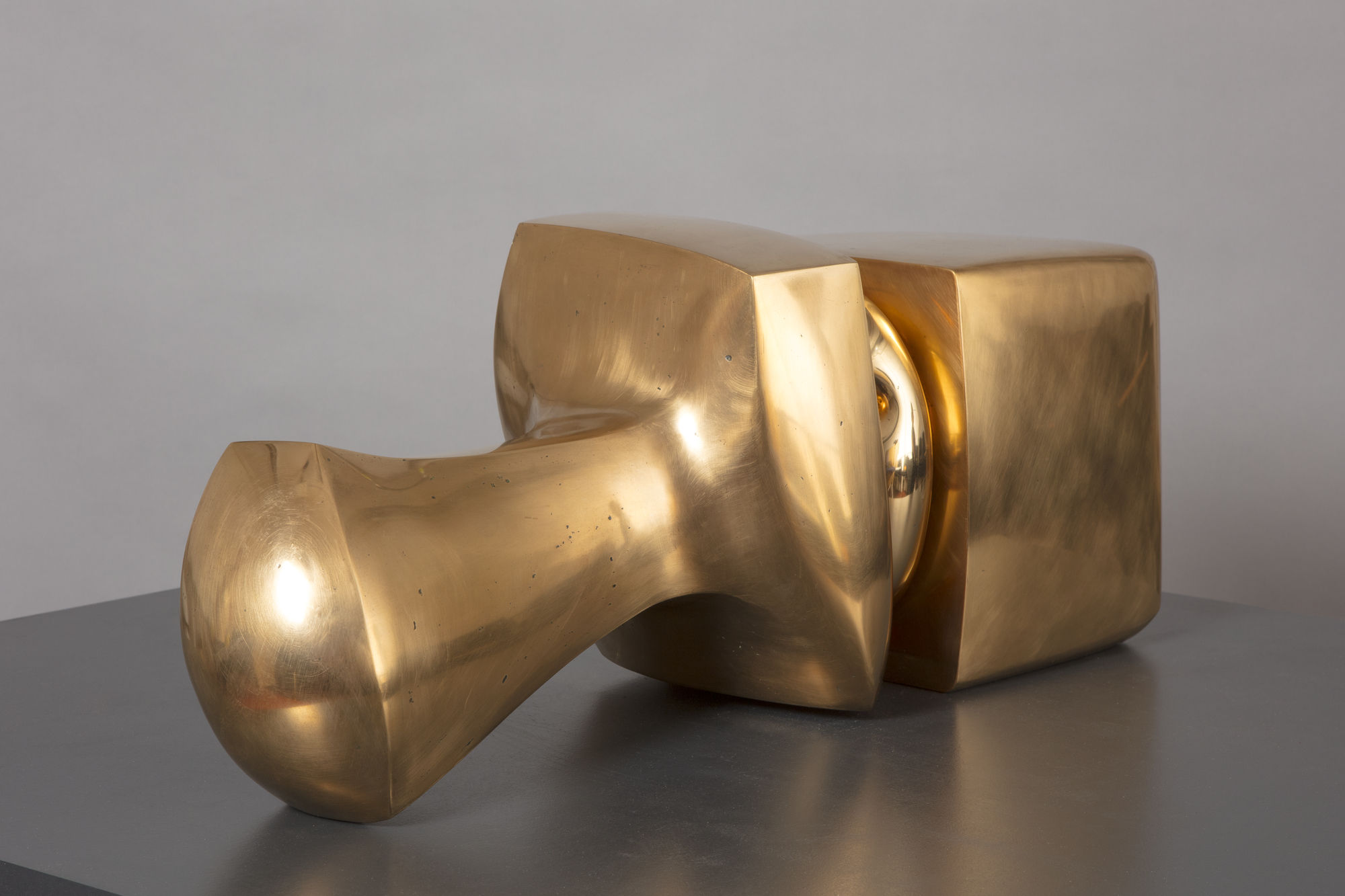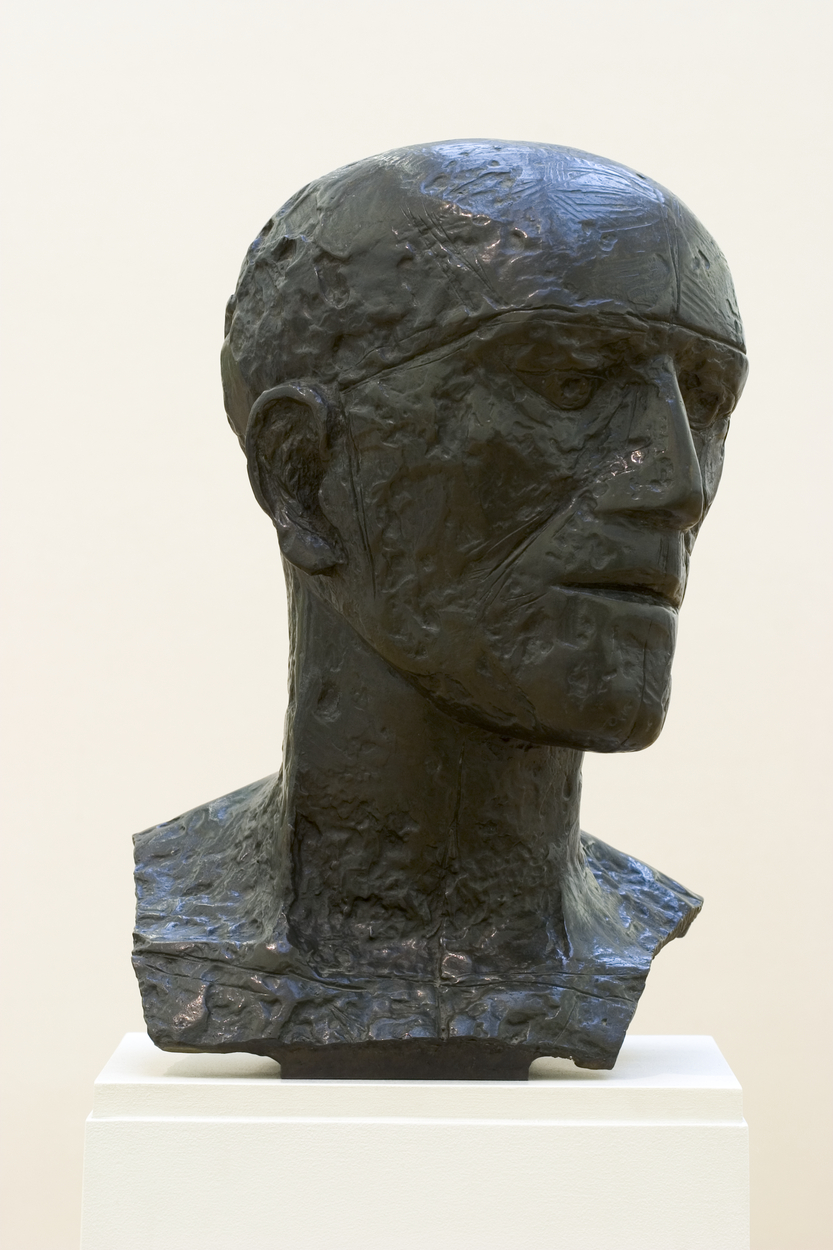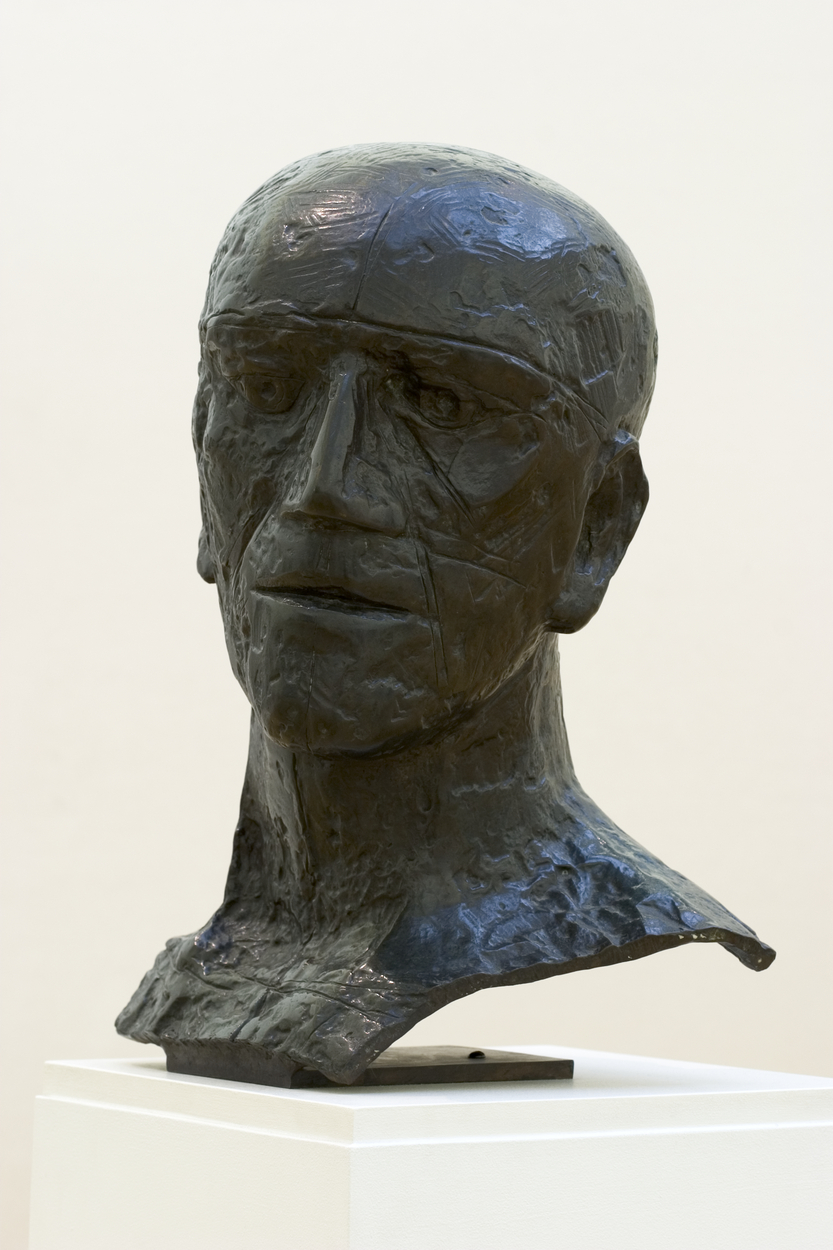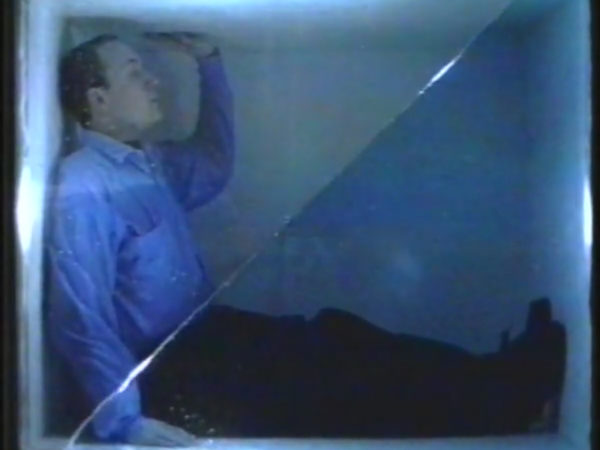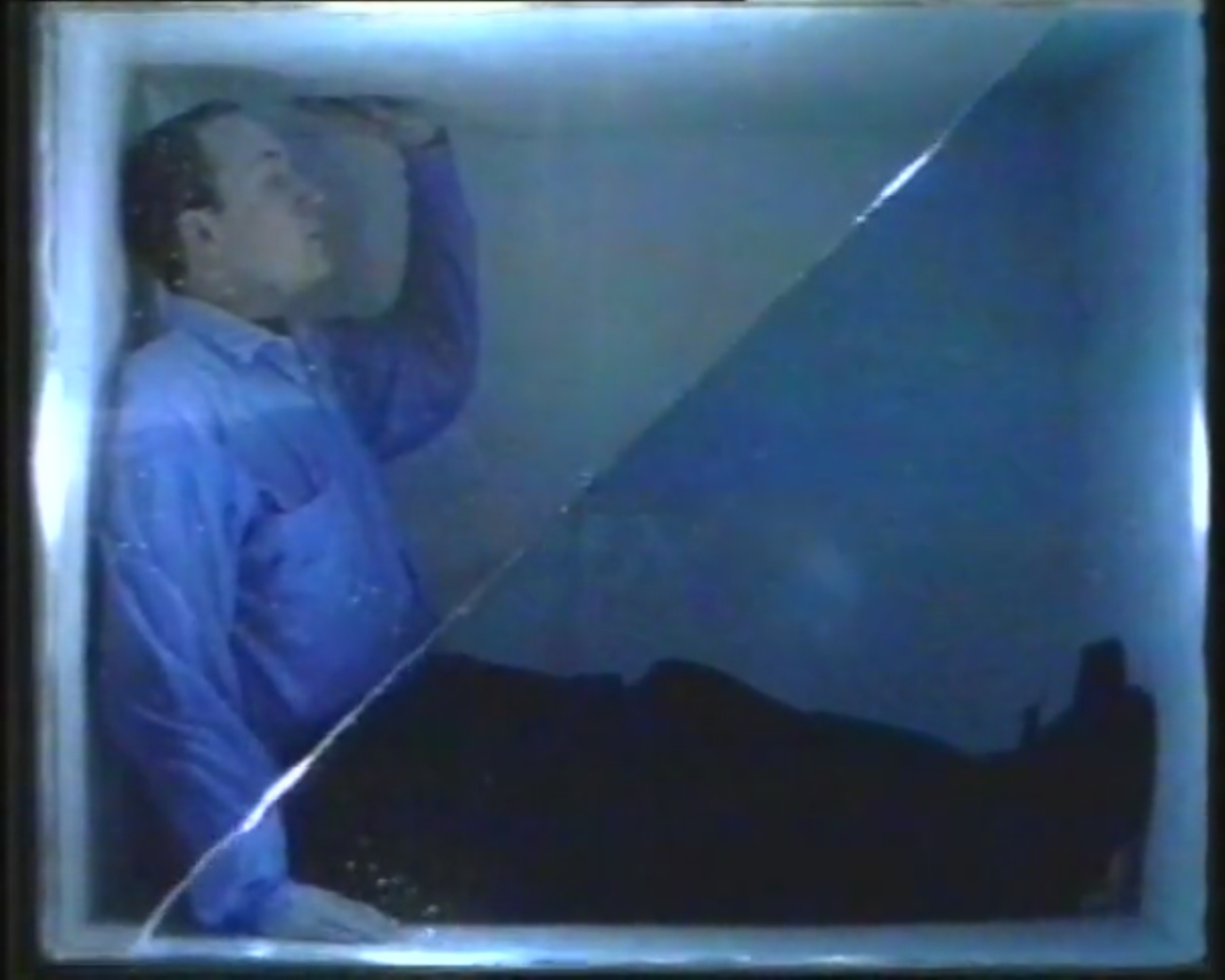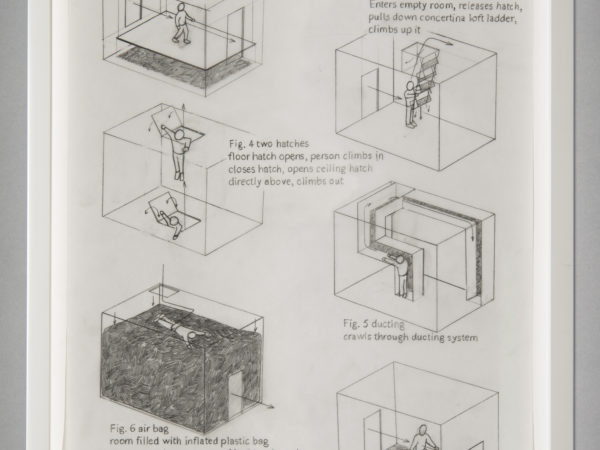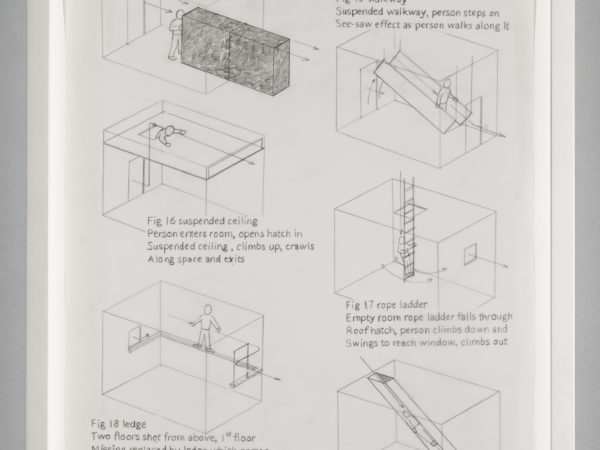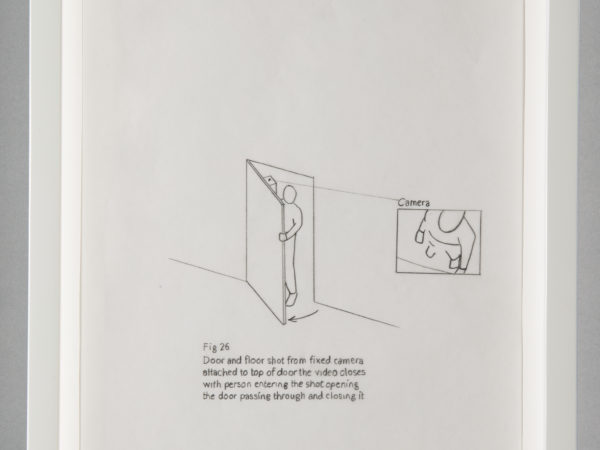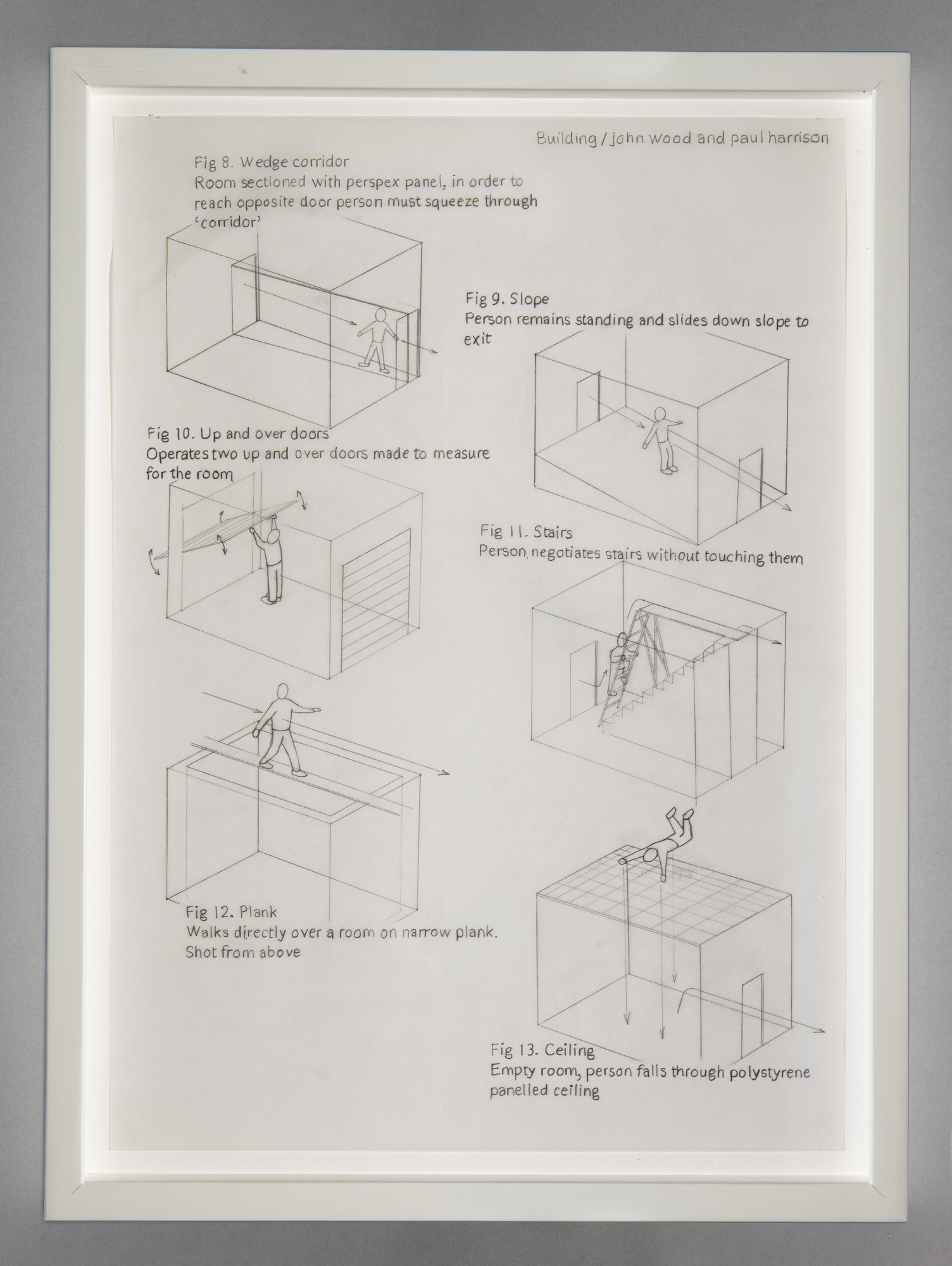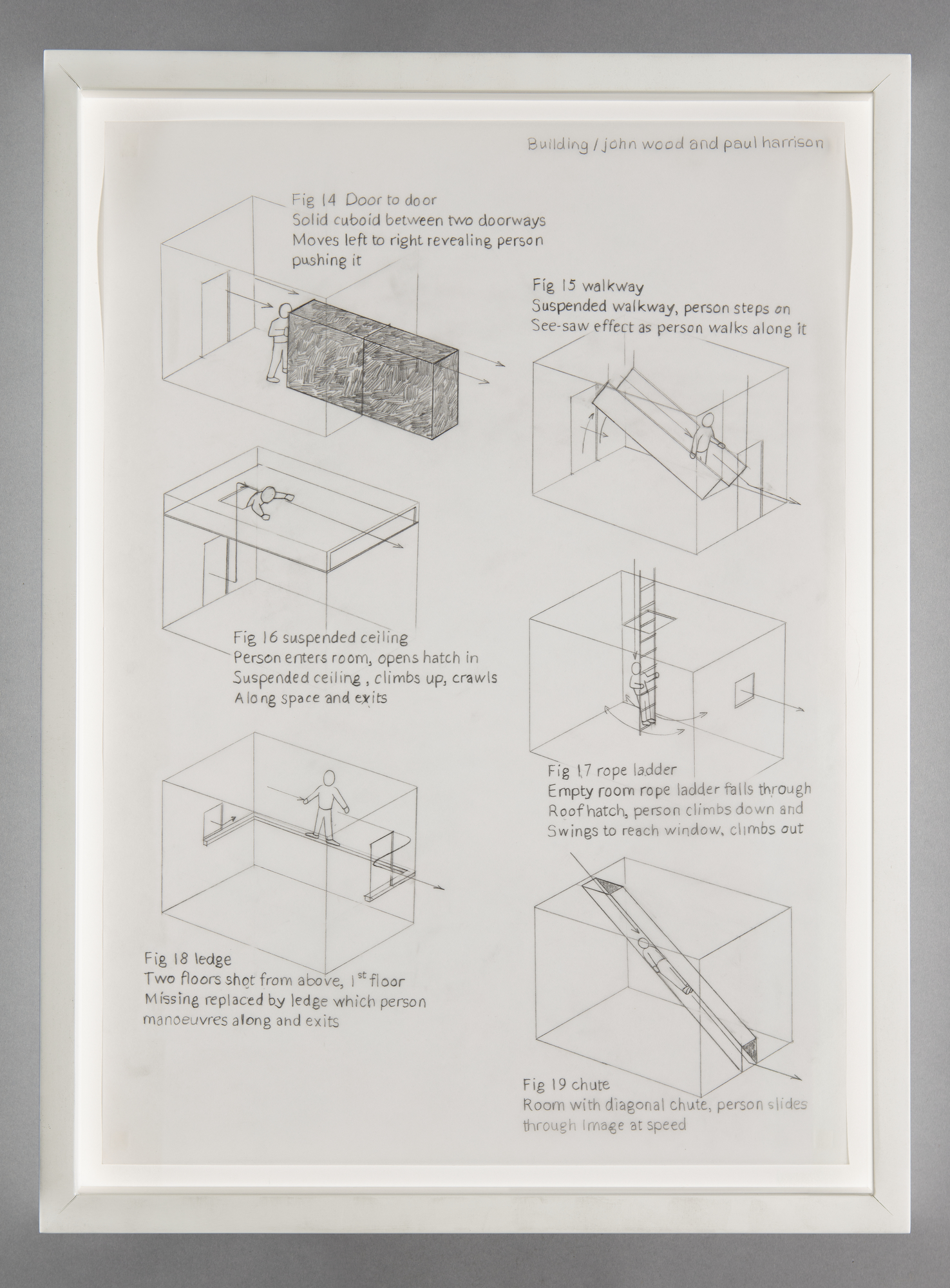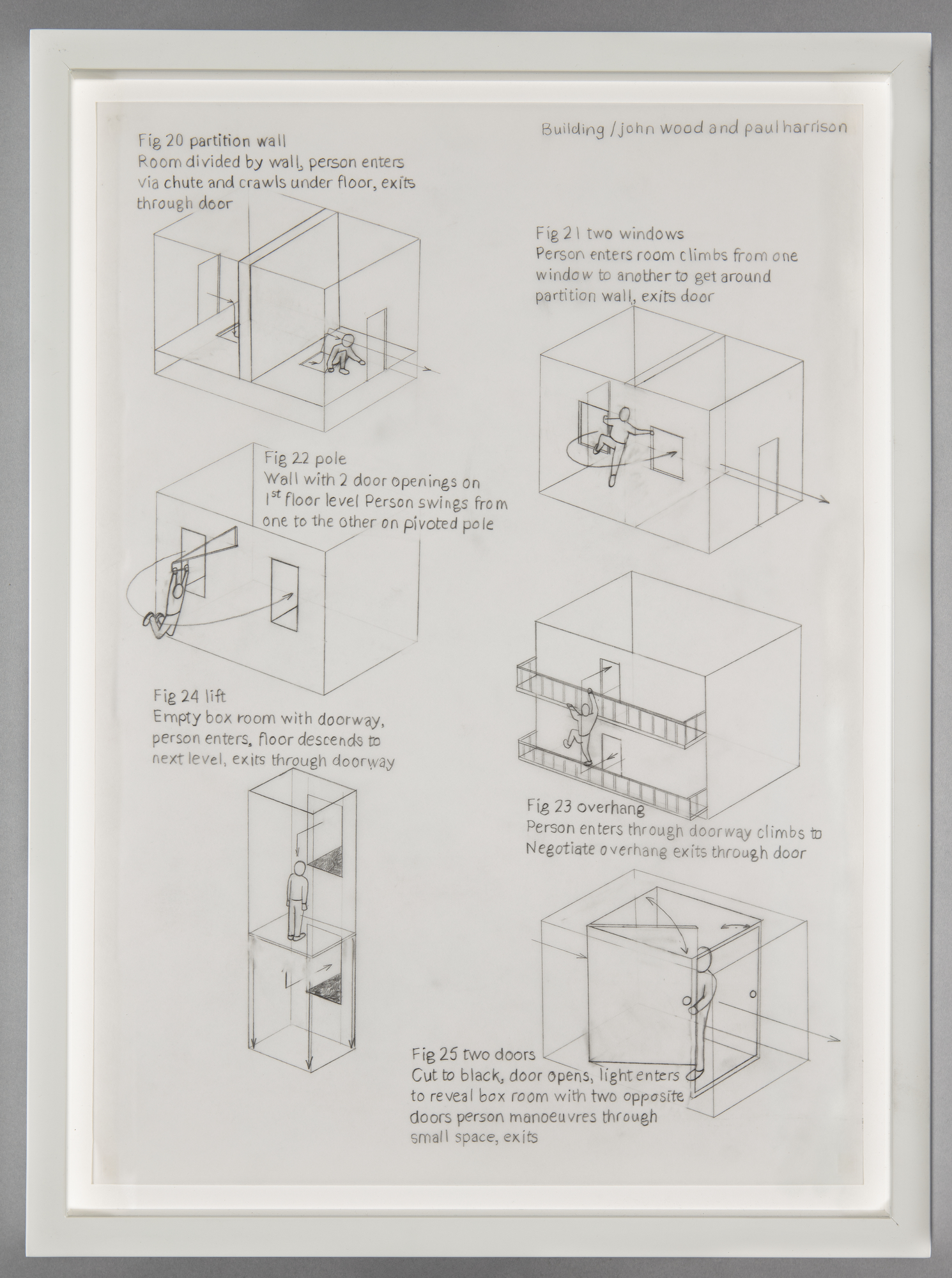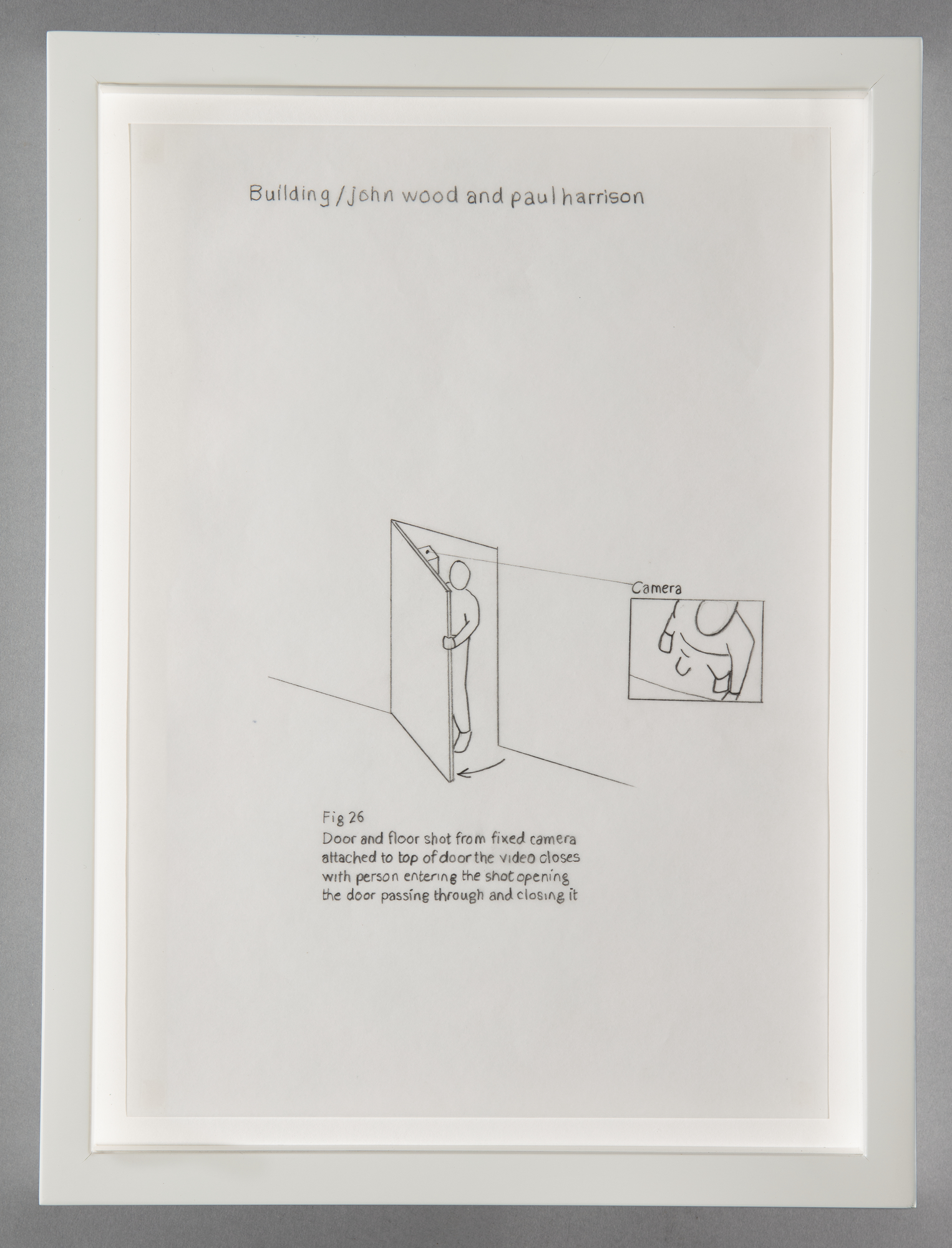The geometry of fear
‘Here are the images of flight, of ragged claws “scuttling across the floors of silent seas”, of excoriated flesh, frustrated sex, the geometry of fear…’ Herbert Read
‘I should have been a pair of ragged claws scuttling across the floors of silent seas.’ TS Eliot ‘The Lovesong of J Alfred Prufrock’
Sculpture can express emotion, including suffering. After World War II a new generation of British sculptors, Lynn Chadwick, Reg Butler, Kenneth Armitage and Bernard Meadows came to prominence at the 1952 Venice Biennale. The writer Herbert Read wrote the catalogue essay, quoting from TS Eliot’s poem, ‘The Love Song of J Alfred Prufrock’. This is where the artists acquired their collective name, the ‘geometry of fear’.
‘By the time I began to make images of iron in the 1940s the modern movement was in full spate. But the excitements today are very different from those post-war years when, importantly, Belsen and Buchenwald, Hiroshima and Nagasaki were very much in the mind’. Reg Butler
‘The forms of my figures have no immediate connection with actual visual appearances. Forms are often reminiscent of other forms […] sometimes the source is forgotten […]. Lately I have become interested in the tragedy of damaged figures […] there is nothing more tragic than being half alive: a brain fully alive and only half working […]. All this has to be expressed in a new way as a completely formal composition.’ Bernard Meadows
‘Best of all the British Council are sending some of my things to the British Pavilion at the Venice Biennale this summer.’ Ken Armitage
The exhibition was an international critical success. Work by the artists was acquired by galleries around the world including the Museum of Modern Art in New York. MoMA’s director, Alfred Barr, declared that‘…it seemed to many foreigners the most distinguished national showing of the Biennale’.
The numbed emotions of their work were influenced by Existentialism. The most notorious is Lynn Chadwick’s Idiomorphic Beast, its webbed torso and spiky limbs evoking the ‘scuttling’ cited by Read. The figure represented is an alien creature, the kind that Chadwick described coming to him in dreams. Armitage’s Moon Figure has a poignant vulnerability reminiscent of his early paintings, especially the open forms of the flattened face and the short arms folded together across the torso. Most abstract of all is Meadows’s Help, a soft, spherical form compressed between two hard surfaces. Cast in shining polished bronze, Help evokes the psychological violence of surrealism as well as the alienation of existentialism.
Elisabeth Frink exhibited with the group the same year. She too spoke of troubled dreams, of burning, falling men. Images of pain and violence recurred throughout her career.
The fascination with the absurd can be seen in the contemporary ‘sculptural’ video by Wood and Harrison, Harry Houdini (there’s no escape that I can see) that explores the physical limits of being human.
Julia Carver explores these scuptures more in this article: ‘Scuttling across the floors of silent seas’: revisiting the sculptures of the Geometry of Fear.
Image:
Idiomorphic Beast
Lynn Chadwick (1914-2003)
Courtesy of The Estate of Lynn Chadwick
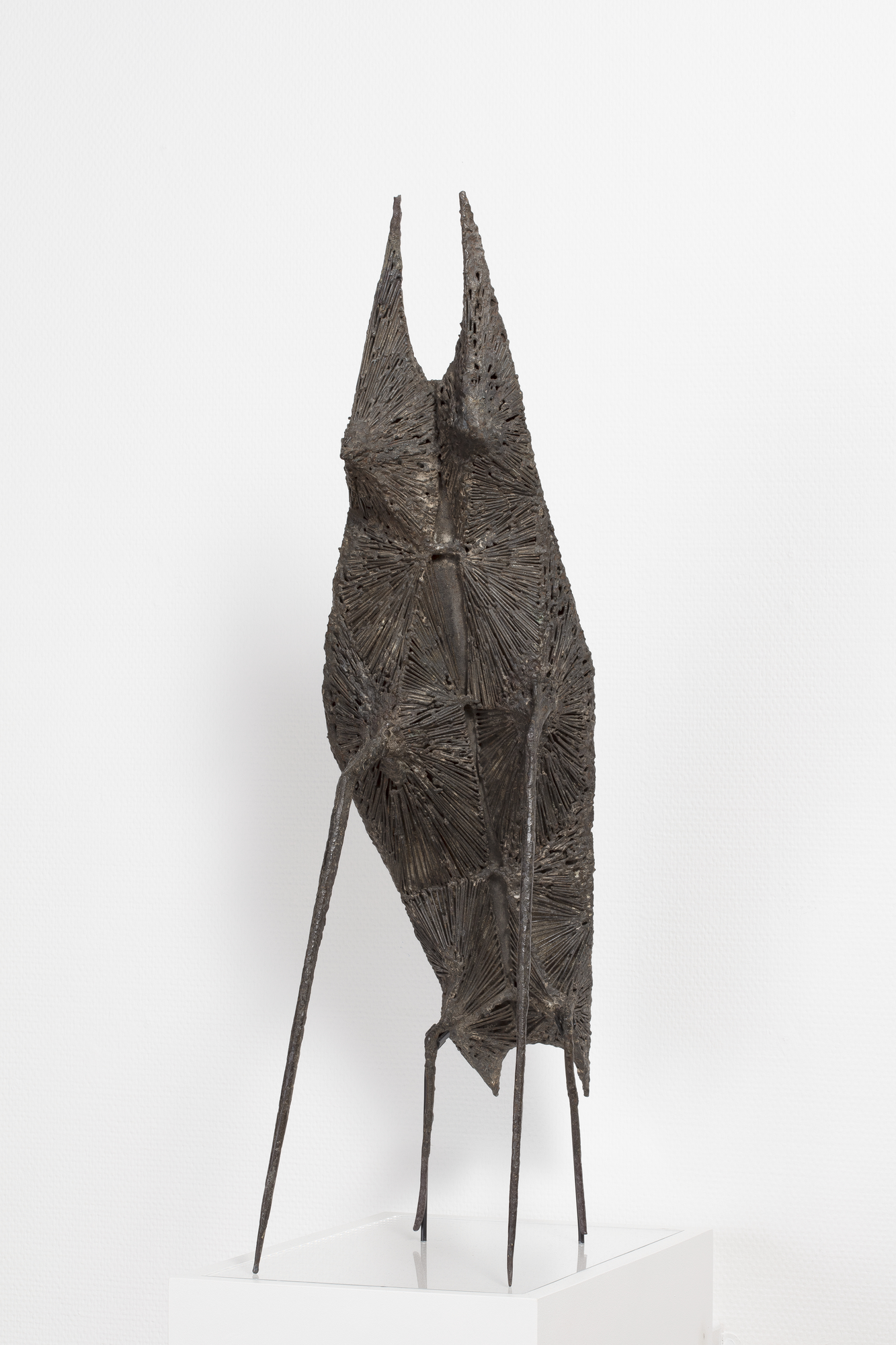
Lynn Chadwick , 1914-2003
‘…it seems to me that art must be the manifestation of some vital force coming from the dark, caught by the imagination and translated by the artists’ skill…when we philosophize upon this force we lose sight of it. The intellect alone is too clumsy to grasp it.’
Chadwick studied architecture before becoming an artist. During the war Chadwick was a conscientious objector, initially labouring on a farm but enlisted in 1941. He trained with the RAF where he escorted convoys of aircraft in the north Atlantic. After the war he established a design business and began to make mobiles, getting a commission for the Festival of Britain in 1951. Chadwick had no formal art training but learnt to weld in 1950 at British Oxygen Company’s welding school. His practice was intuitive and he rarely made maquettes. He named his work after it was complete.
Lynn Chadwick , 1914-2003
Reg Butler, 1913-1981
‘…the time when the great forces of nature, the stones and the rocks, were gods, is gone.’
Butler was always interested in art, carving in his free time from his job as an architect. As a conscientious objector during World War II, he worked as a blacksmith. This fed into his invention as a sculptor. He was selected for the British Pavilion at Venice in 1952 and in 1953 won the prize to create a Monument for Unknown Political Prisoner, however his work was often misunderstood and vandalised. Butler had an ongoing fascination with the female form, especially the ancient Willendorf Venus. He painted his later figures, attempting a flesh colour on the bronze, with real hair threaded into their ‘scalps’ by his wife Rosemary, but with their twisted and contorted forms they are alien and awkward.
Reg Butler, 1913-1981
Kenneth Armitage, 1916-2002
‘sculpture is the most permanent form of expression’
Armitage experimented with sculpture from his youth in Leeds. During the war he taught aircraft recognition but in his spare time he carved in soap. Afterwards he taught at Corsham Court, befriending Lynn Chadwick and building a foundry there with Bernard Meadows. In 1952 he was included in the British Pavilion at the Venice Biennale New Aspects of British Sculpture where the term ‘Geometry of Fear’ to describe them was coined by Herbert Read. Armitage’s style later shifted from the flattened, sometimes vulnerable, figures and groups of the 1950s to graphic friezes and smooth monumental casts, often in public spaces.
Kenneth Armitage, 1916-2002
Ken Armitage ©/ Copyright Kenneth Armitage Foundation
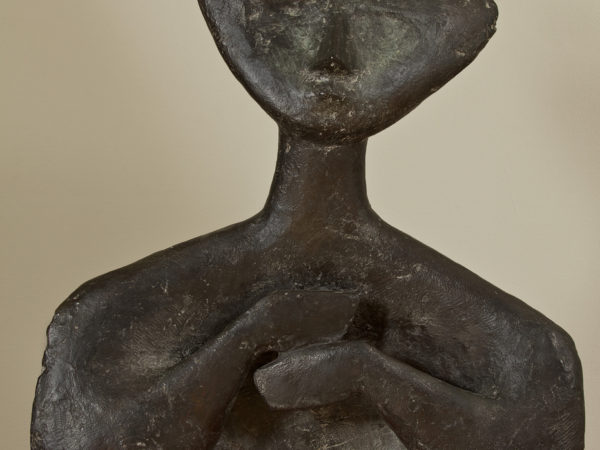
Moon Figure, bronze 1948
Bernard Meadows, 1915- 2005
Meadows almost didn’t go to art school as his parents wanted him to take up a secure livelihood during the Depression-era, but the accountant he was apprenticed to eventually dismissed him. At art college his class was invited to Henry Moore’s studio where Meadows presented a carved wooden flint. The older artist invited Meadows to work as an assistant in his studio that summer and a fifty-year paternal friendship followed.
Meadows served on the Cocos Islands in the Indian Ocean during the war and it was here that he encountered the large crabs that became a motif in his work. In London he trained and subsequently taught at the Royal College of Art and assisted Moore. Meadows was invited to exhibit at Venice with Chadwick, Butler and Armitage where he showed the Crabs that possibly inspired Read’s famous ‘scuttling’ quote.
Bernard Meadows, 1915- 2005
Bernard Meadows ©/ Estate of Bernard Meadows

Help (Opus 81), bronze, 1966
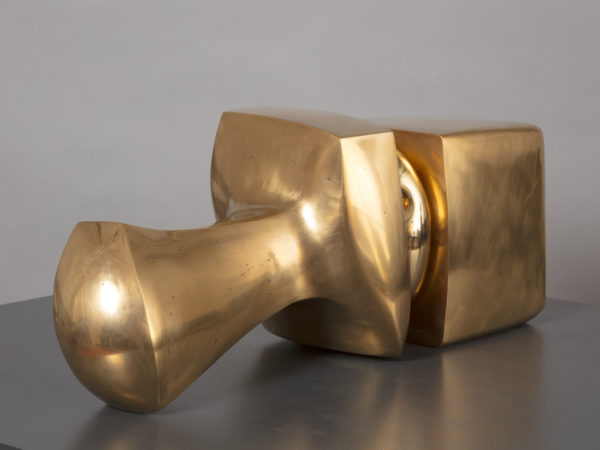
Help (Opus 81), bronze, 1966
Elisabeth Frink, 1930-1993
‘…in the arts you can’t differentiate between the sexes: men and women are equal.’
Growing up near an airfield in Suffolk, Frink witnessed military aircraft in flames and pilots falling from the sky: these nightmare images informed her visual language of injured animals, falling and diving men and soldiers. She said that it was Rodin that made her choose sculpture at Guildford School of Art.
She was younger than the ‘Geometry of Fear’ artists but appeared with them in 26 Young Sculptors at the ICA in 1952. She was just 21.
Elisabeth Frink, 1930-1993
Elisabeth Frink © The Elisabeth Frink Estate and Archive. All Rights Reserved, DACS 2019
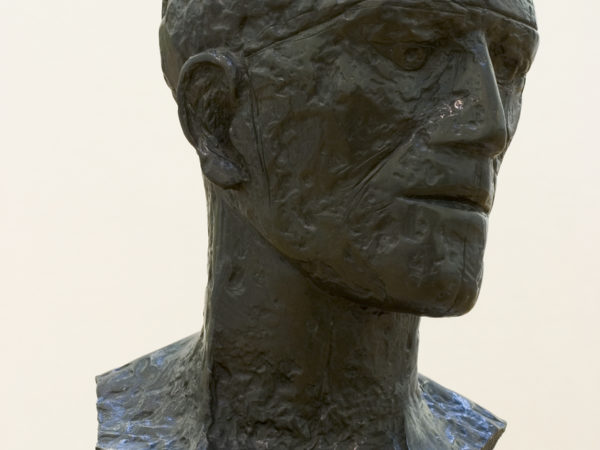
Prisoner, bronze, 1988
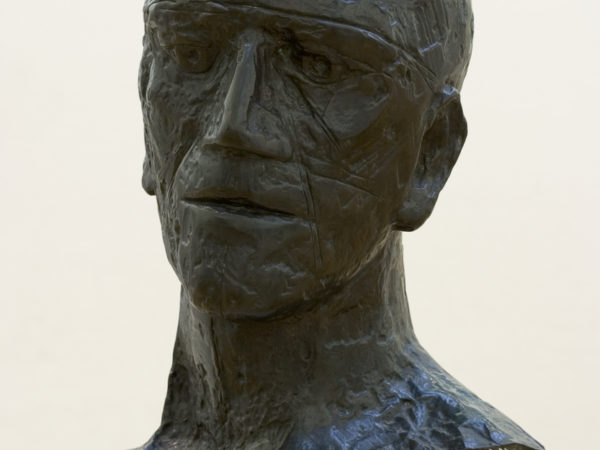
Prisoner, bronze, 1988

Horse and Rider, lithograph, ?1970
John Wood, born 1969, and Paul Harrison, born 1966
Wood and Harrison have worked together since 1993. The videos they make are an extension of sculpture: they are always carefully choreographed whether they are throwing poses or performing slapstick. The artists work with their own bodies and share an Existential outlook on human helplessness with some of the other artists in the exhibition, but Wood and Harrison reflect on the essential comedy of the human condition.

